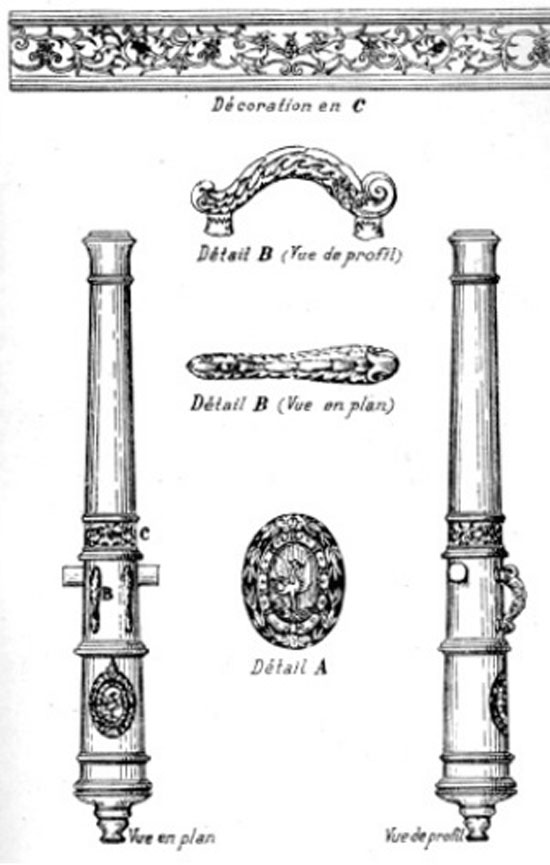Recently-found, over 350-year-old cannon in the city originates from Netherlands
A cannon which was recently discovered in Da Nang originates from the Netherlands and dates back over 350 years, according to new scientific findings. This is the first bronze cannon to have been found in the city since the start of Viet Nam’s fight against the French-Spanish troops invading the country in 1858.
 |
| Decorative pattern and some Chinese characters inscribed on the cannon found in Da Nang |
The gun, found in Hoa Hiep Nam Ward, Lien Chieu District on 23 May, is 174.1cm in length and 200kg in weight.
The whole cannon featured the cascabel, the reinforce and the chase.
It is noticeable that the reinforce section features an oval-shaped pattern section with the image of a phoenix in its centre.
In particular, there are trunnions which are located at the foremost end of the reinforce just behind the reinforce ring. They consist of two cylinders perpendicular to the bore and below it which are used to mount the cannon on its carriage.
The design, structure and patterns on the newly-found cannon are typical for an old type of bronze cannons sourced from the Netherlands.
Additionally, the Chinese characters inscribed in a rudimental way on the cannon, exactly on its trunnions, as instructions to gunners clearly show that it belonged to the Nguyen Dynasty (1802 – 1945).
It shares many similarities with the 3 Dutch cannons made in 1640, 1661 and 1677 – 1678, respectively, currently kept at the Hue Museum of Royal Antiquities in the neighbouring province of Thua Thien-Hue.
Vietnamese researcher Nguyen Quang Trung Tien said, Dutch bronze cannons unearthed so far, including the newly discovered one in Da Nang, date back to the 17th century, exactly from 1633 to 1674. Based this fact, these cannon are approximately 350 years old.
According to historical documents, the most of the bronze cannons from the Netherlands appeared in Viet Nam as gifts or goods traded under the reign of the Trinh Lords in the northern region. Some others were retrieved by the Nguyen Lords from Dutch vessels sunken or stranded in the central region southwards.
Based the above findings, it is thought that the newly discovered Dutch bronze cannon would have been brought by the Nguyen Dynasty’s troops from the Dien Hai Citadel during their retreat from 1 to 2 September, 1858.
Another speculation is that the gun battery might be damaged and buried by the invaders in the sand of the Xuan Thieu Beach.
 |
| An illustration, mentioned in Le Breton- written research article, of the cannon displayed at the former Vinh Legation in 1933 which shares some similarities with the recently-found one in Da Nang in terms of shapes and decorative patterns. |
Recently, researcher Tien revealed another piece of evidence that the shape and decorative patterns featuring the image of a phoenix on the newly- found bronze cannon in Da Nang are similar to another one which was placed at the former Vinh Legation in the past.
According to a research article by Le Breton in 1933, the Principle of the Hue National School, former Director of Dutch National Military Museum A. Moefer affirmed at that time that the cannon displayed at the former Vinh Legation about 90 years ago was made in the 17th century. Also, this cannon and another one which was made in 1640 and previously placed at the former Hue Legation (now displayed at the Hue Museum of Royal Antiquities) had both been made in the Netherlands, but at different gun-casting facilities.
The above-mention evidence release by researcher Tien re-affirmed the fact that the cannon recently found in Da Nang is over 350 years old and it was made in the Netherlands.